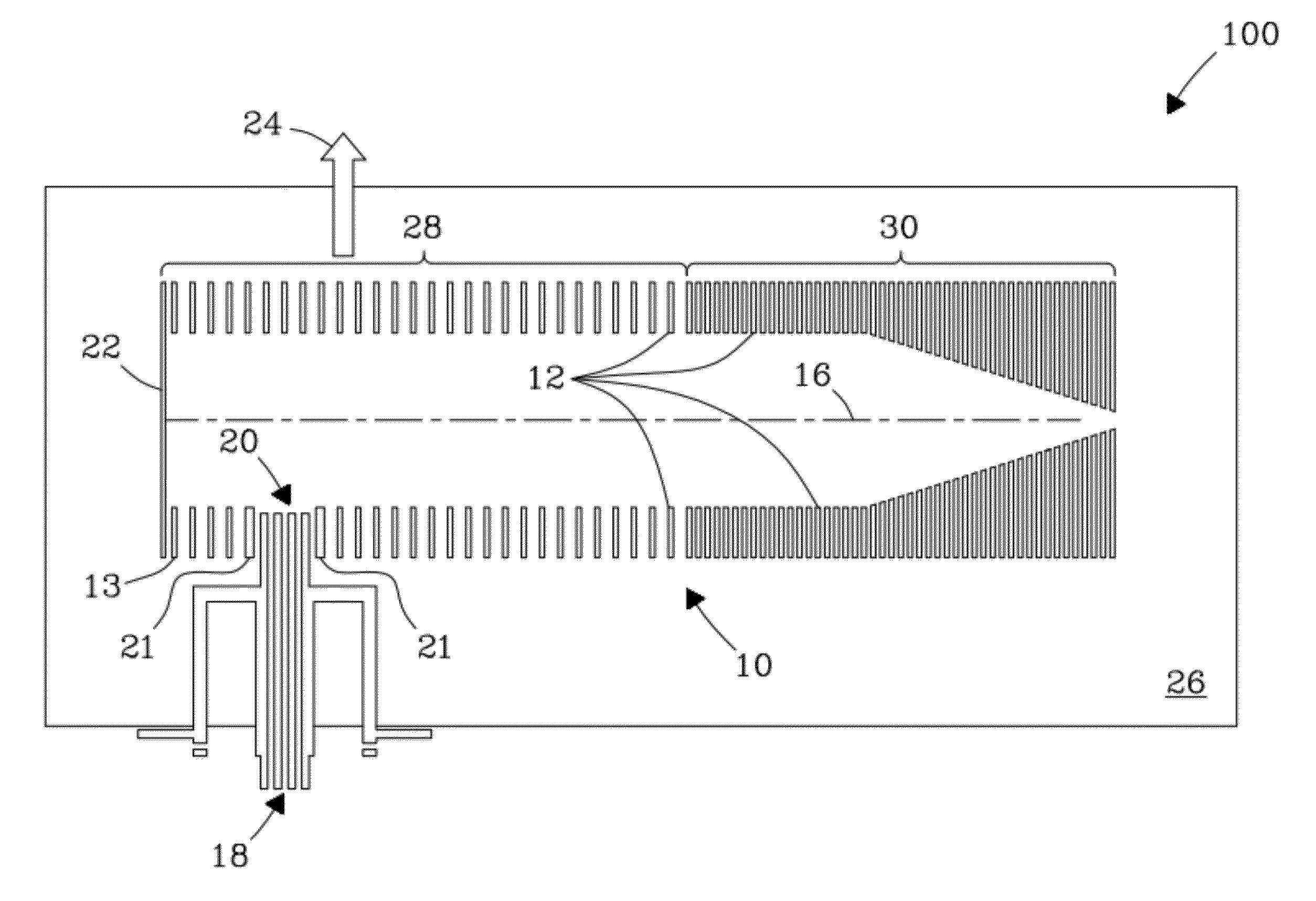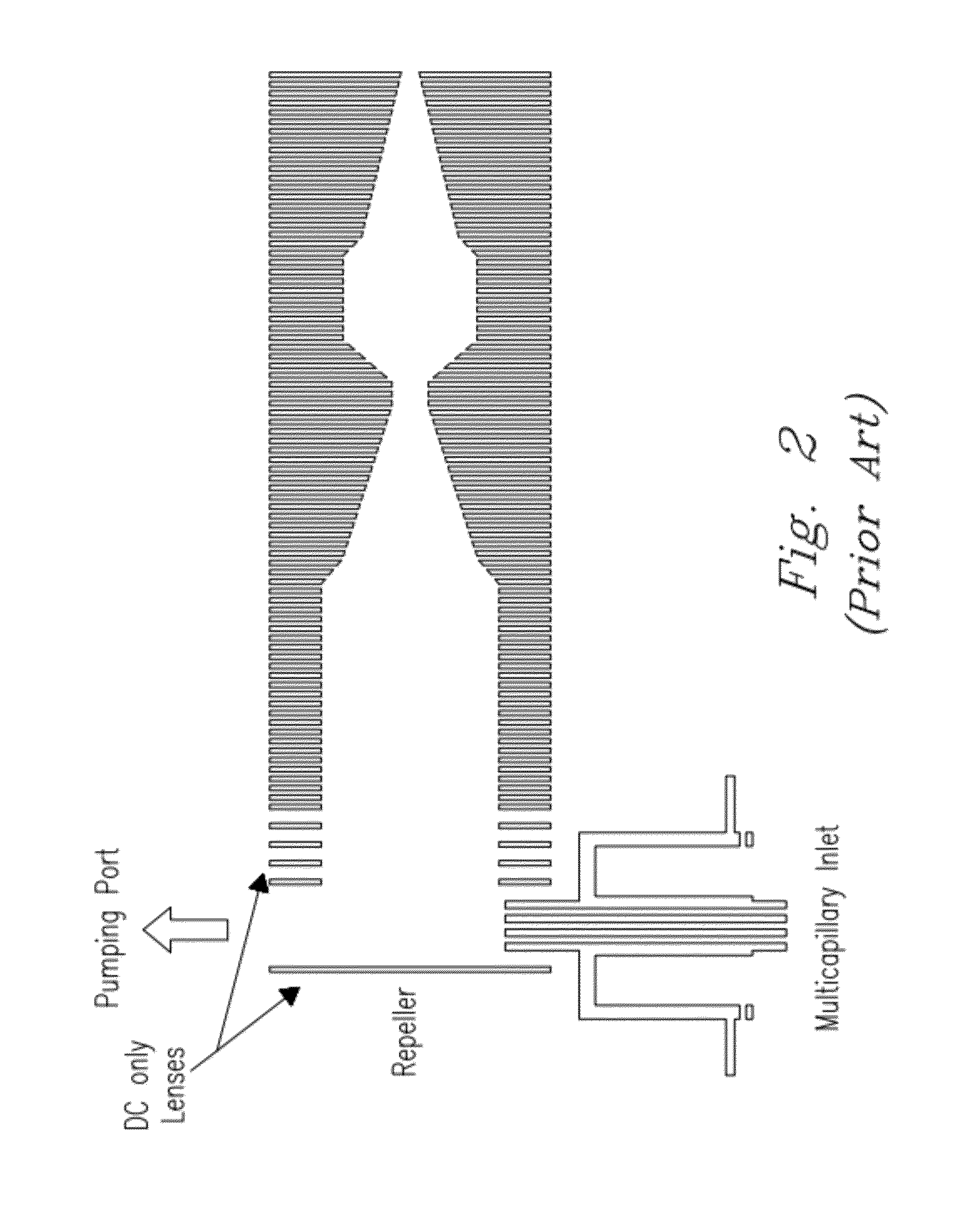Orthogonal ion injection apparatus and process
a technology of orthogonal ion injection and ion injection, which is applied in the direction of electrostatic deflection of tubes, separation processes, particle separator tube details, etc., can solve the problems of inability to fully solve liquid droplets generated, contamination of downstream components of mass spectometers, and unstable signals, so as to reduce noise and contamination, improve system sensitivity, and minimize contamination of downstream components
- Summary
- Abstract
- Description
- Claims
- Application Information
AI Technical Summary
Benefits of technology
Problems solved by technology
Method used
Image
Examples
Embodiment Construction
[0036]The present invention includes an orthogonal ion injection device and process for introducing ions into an ion guide that minimizes contamination of downstream mass spectrometer elements that normally would result in unstable signals and loss of signal over time. The present invention solves contamination problems known in the art by preventing liquid droplets generated by the ionization source (e.g., ESI sources) from entering into the mass spectrometer. While the present invention is described in reference to specific embodiments configured with a specific type of ion guide (e.g., an electrodynamic ion funnel), the invention is not limited thereto. For example, the invention can deliver ions in concert with various ion guides including, but not limited to, e.g., electrodynamic ion funnels, ion funnel traps, tandem ion funnels, S-lenses, stacked ring ion guides, including combinations of these various ion guides and associated components. Thus, all modifications as will be ma...
PUM
 Login to View More
Login to View More Abstract
Description
Claims
Application Information
 Login to View More
Login to View More - R&D
- Intellectual Property
- Life Sciences
- Materials
- Tech Scout
- Unparalleled Data Quality
- Higher Quality Content
- 60% Fewer Hallucinations
Browse by: Latest US Patents, China's latest patents, Technical Efficacy Thesaurus, Application Domain, Technology Topic, Popular Technical Reports.
© 2025 PatSnap. All rights reserved.Legal|Privacy policy|Modern Slavery Act Transparency Statement|Sitemap|About US| Contact US: help@patsnap.com



